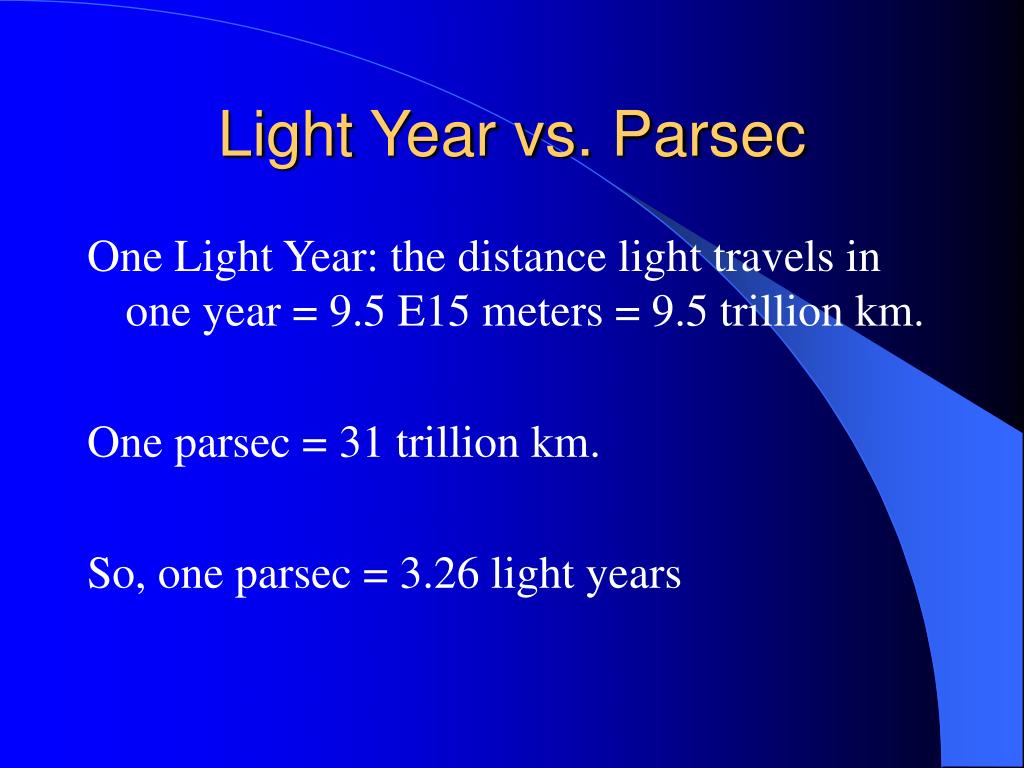

It has a parallax of 0.769 second of arc which means it is 1.30 parsec far from us. Usage of fractions is recommended when more precision is needed. Type in your own numbers in the form to convert the units Quick conversion chart of parsecs to kilometer 1 parsecs to kilometer 30856776000000 kilometer 2 parsecs to kilometer 61713552000000 kilometer 3 parsecs to kilometer 92570328000000 kilometer 4 parsecs to kilometer 1. conversion km Radius of the Earth (RE ) Astronomical unit (AU) Light year parsec km.
#Parsec to km professional
It exists within another solar system called Alpha Centauri triple-star system. In professional astronomical literature, the unit of parsec is used. There is a star is called Proxima Centauri. It is amazing to know that when we look at the night sky, we can see stars which are nearly a distance of 500 parsecs of the Sun. The parsec distance of an object is the reciprocal of its parallax in seconds of arc. It is defined as the distance at which one astronomical unit subtends an angle of one arcsecond. Parsec has a special way to measure distance, it depends on trigonometry. One parsec equals 3.26 light-years, which is equivalent to 3.09 × 10 13 km. The parsec is a unit for expressing distances between stars and galaxies.

Professional astronomers use the parsec unit to express these incredible distances. In the space scale, distances can't be expressed by meters or feet. and Great Britain are the only two developed nations use miles rather than kilometers on their road signs. It is now the measurement unit used officially for expressing distances between geographical places. The kilometer is a unit of length equals to 1,000 meters. However most of countries use meter to measure length, US is the primary exception which is using imperial system For example, the distance of a road is how long the road is. Meter is used as a measure of distance across the globe.


For example, Tatooine was less than a parsec away from Geonosis, and the Kamino system was located twelve parsecs south of the Rishi. The standard coordinate grid used by starship navigators to record the location of star systems was based on a scale with measurements of 15 parsecs. It is the base unit of length in the International System of Units (SI). A parsec was a unit of astronomical distance equivalent to about 30.5 trillion kilometers (3.26 light-years). Meter or metre is a metric measurement slightly longer than a yard. Nowadays, meter or metre is the base unit of length in the International System of Units (SI). The result of the previous process was called as a meter. Therefore a light year is exactly 9,460,730,472,580.8 kilometers. In 1793, The distance from the equator to the North Pole was measured and divided by 10 million. The year used by the International Astronomical Union is 365.25 days.


 0 kommentar(er)
0 kommentar(er)
